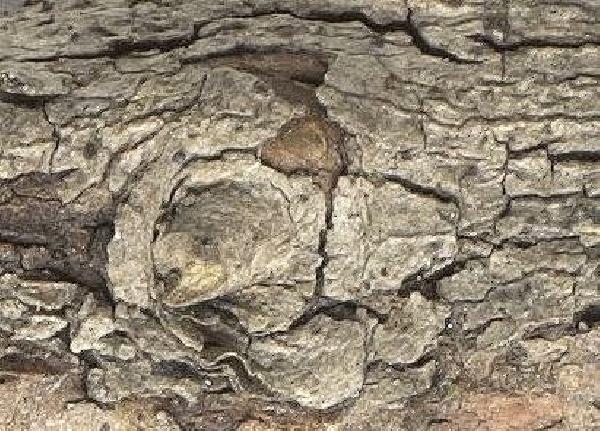Acrocordia gemmata (Ach.) A. Massal. var. rhododendri Hinter.
Bibl. Lichenol., 55: 41, 1994.
Synonyms:
Distribution:
Description: Thallus crustose, effuse, whitish or pale grey, ecorticate, immersed in the bark or thinly episubstratic, continuous or partially rimose. Perithecia black, usually numerous, (0.3-)0.5-0.7 mm across, half-immersed in the thallus. Involucrellum hemispherical to globose, brown-black, surrounding a globose, colourless exciple; hymenial gel colourless, I- or I+ orange-red, K/I-: hamathecium of persistent, slender, c. 1-2 μm thick, sparingly branched or anastomosing, long-celled pseudoparaphyses; periphyses absent. Asci 8-spored, narrowly cylindrical, K/I-, fissitunicate, the apical dome with a broad ocular chamber surmounted by a hemispherical structure, with uniseriately arranged spores. Ascospores 1-septate, the old ones sometimes weakly constricted at septum, elongate-ellipsoid with weakly pointed ends, the septum thick, (17-)19-28 x 6.5-9 μm, surrounded by a perispore which appears verrucose in water, smooth in K. Pycnidia black, globose to pyriform, 0.1-0,2 mm in diam.; conidiogenous cells cylindrical, elongate; conidia acrogenous, simple, colourless, bacilliform to almost ellipsoid, 3-5 x 1-1.2 μm. Photobiont trentepohlioid. Spot tests: K-, C-, KC-, P-, UV-. Chemistry: without lichen substances.Note: on bark and wood of subalpine shrubs in rather shaded situations, differing from the typical variety in the ecology and the more elongated, somehow pointed ascospores. Described from the Julian Alps in Slovenia, to be looked for in the Italian Alps.
Growth form: Crustose
Substrata: bark
Photobiont: Trentepohlia
Reproductive strategy: mainly sexual
Poorly known taxon in need of further study

Predictive model
Growth form: Crustose
Substrata: bark
Photobiont: Trentepohlia
Reproductive strategy: mainly sexual
Poorly known taxon in need of further study

Predictive model


